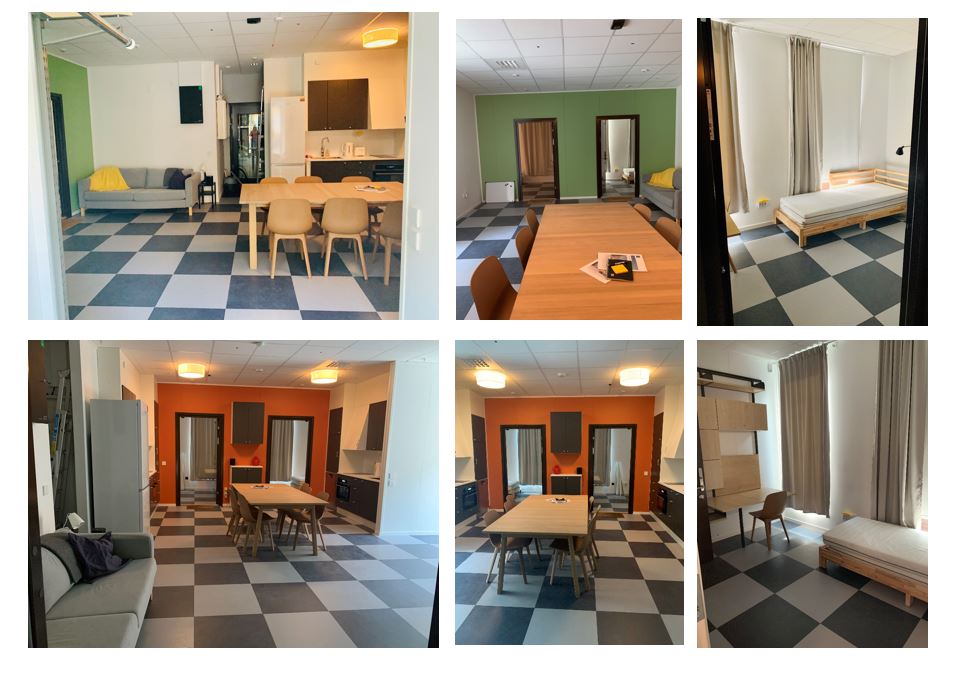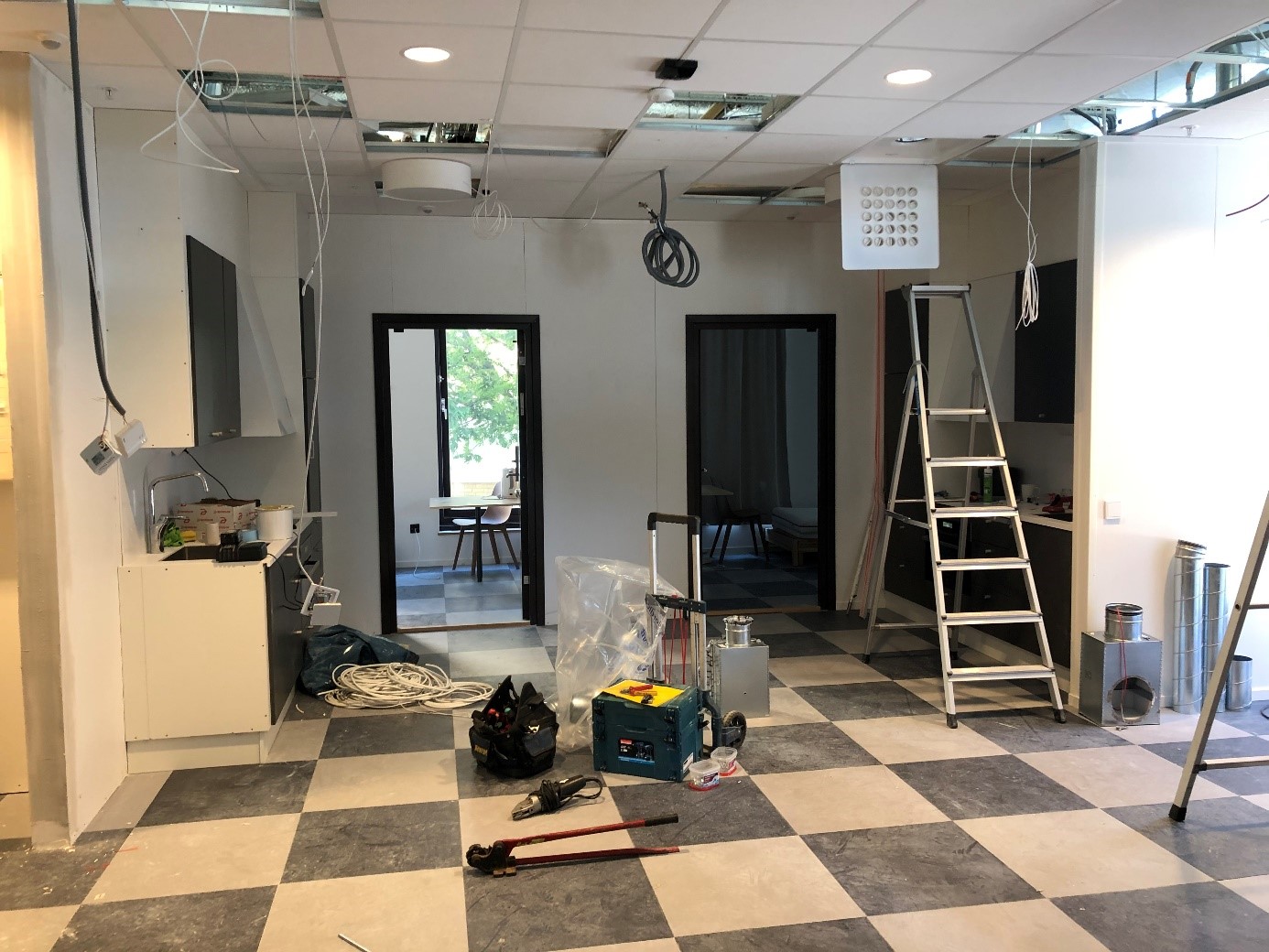Co-Living Comes to Testbed KTH

The four one-bedroom apartments at Testbed KTH have been rebuilt during the summer of 2020 into co-living units with shared kitchen and living room, and four single rooms with private bathrooms. The flexible infrastructure at Testbed KTH made the shape-shifting easy.
The reconfiguration was carried out based on input from researchers and partners in the Co-Kitchen project led by KTH professors Sara Ilstedt and Martin Sjögren and Linda Teng at Akademiska Hus.
The design of the interior is conducted in collaboration with industry partners Savvy and TIP. The aim of the project is to study social interactions and requirements from the tenant’s perspective with the aim of developing standard layouts for future co-living. You can read more about the project here Co-living & Productive space usage

Here's what people involved in this project are saying:
“It’s fantastic to have real people living in the rebuilt lab apartment. The lab provides a unique opportunity to test behaviour and energy use in a real-life setting. The multidisciplinary research team, bringing together architecture, design, life-cycle analysis, infrastructure, and service design is also truly unique.”
—Prof Sara Ilstedt, project manager
“The transition toward a more sustainable society will require this kind of real-life experimentation. We hope to learn more about the interconnectedness of the material and the social: How changes to material structures such as apartment layouts and kitchen equipment can help change social norms and daily practices – and the other way around.”
—Martin Sjöman, design researcher.
“We want to see what happens when you merge four separate kitchens into one. Is it possible to save energy this way? Which aspects of sharing a kitchen do people like? And what can we do to make it better? We will bring this knowledge to the table when we build student housing in the future.”
—Susanne Malmgren, Director at
Studentbostadsföretagen
, Sweden’s industry association for owners, developers and administrators of student housing.
“Working with the students will give us new insights and perspectives on designing for co-living. That’s what I look forward to in this project!”
—
Theory Into Practice
- TIP Architects uses architecture as a means to drive development forward.
